| |
This overview is provided by Dr. Rebecca Farber, M.D. Apple Pediatrics, 157 East 72nd Street, NY, NY 10021
Should you have any additional questions about fever and your child (and your child is a patient of Apple Pediatrics) please either email your child's provider (contact list) or call us at 888-603-0993. Thank you. You may download an official brochure about fever provided by the American Academy of Pediatrics by clicking here: fever-aap.
|
| |
Normal Temperature is 98.6 degrees Farenheit.
Fever is 100.4 degrees Farenheit or above.
METRIC TEMPERATURE CONVERSION
Centigrade
(C) degree |
37 |
37.8 |
38.4 |
39 |
39.6 |
40 |
40.6 |
Farheinet
(F) degree |
98.6 |
100 |
100.1 |
102.2 |
103.2 |
104 |
105.1 |
- An elevation of temperature by itself is not an illness but only an indication that an infection may be taking place.
- Unless the temperature is greater than 106 degrees, fever itself is not harmful. It is important to remember that the height of the fever is not related to the severity of the infection. This is especially true in the case to the children 6 months to 5 years of age who often have fever high temperatures with common viral illness.
- If fever occurs in any infant under 6 months of age, we should be notified. For children over 6 months of age who have fever but not other signs or symptoms of illness, it is usually safe to administer an antipyretic such Tylenol Liquid. This will make your child more comfortable and enable you to observe for other evidence of illness. If fever persists for over 24 hours, contact us.
TREATING A FEVER:
1. Tylenol (acetaminophen)
- This may be administered every 4 hours.
- Dosage should be according to weight.
- It is important that the temperature should be checked BEFORE the medicine is given.
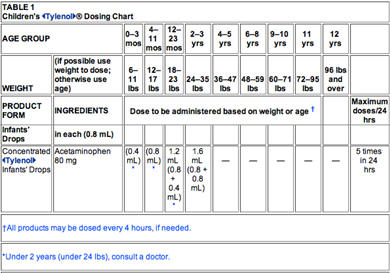
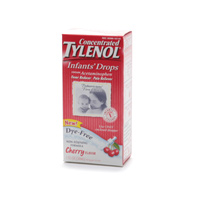
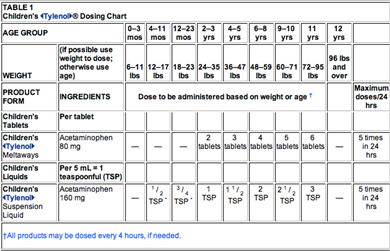

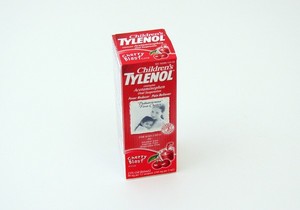
2. Children’s Advil or Motrin (ibuprofen)
- Ibuprofen is administered every 6 hours
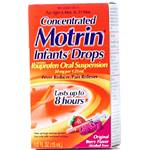

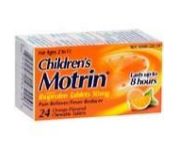
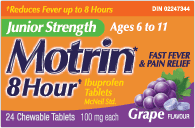
| Child’s Weight |
Infant’s Motrin (50 mg/dropper) |
Children's Motrin (100mg/ 5 ml) |
Children's Chewable 50 mg tablets |
Junior Strength 100 mg tablets |
11-17 pounds |
1.25 ml (one dropper full) |
|
|
|
18-23 pounds |
1.875 ml |
|
|
|
24-35 pounds |
|
1 Teaspoon (5 ml) |
2 Tablets |
|
36-47 pounds |
|
1 1/2 Teaspoons (7.5 ml) |
3 Tablets |
|
| 48-59 pounds |
|
2 Teaspoons (10 ml) |
4 Tablets |
2 Tablets |
| 60-71 pounds |
|
2 1/2 Teaspoons (12.5 ml) |
5 Tablets |
2 1/2 Tablets |
| 72-95 pounds |
|
3 Teaspoons (15 ml) |
6 Tablets |
3 Tablets |
3. Lukewarm water baths
- When your child has a temperature of 103 and above.
- Bathe for at least 20 min or as long as the child will tolerate.
- Mottling of the skin may occur. If your child exhibits chills, remove him/her from tub because shivering actually will increase your child's temperature.
- Alcohol should not be used.
4. Dress child lightly. Do not cover with blankets.
5. Keep room temperature normal or slightly cooler.
6. Encourage fluids.
- Clear liquids like pedialyte or gatorade are usually best
7. Other medications & fever reducers
- Fever medications may be used at the same time as antibiotics.
8. Febrile seizures
- May happen occasoinally in children ages 1-5 years, not because of the "high fever", but actually from the rapid rise of temperature (i.e. before you even know that your child has a fever)
- Should a convulsion occur, lay your child on his side or stomach, and protect him from harm.
- Do not attempt to force anything into his mouth. The episode will last only a few minutes.
NOTIFY US IMMEDIATELY
|


 MY CHILD’S HEALTH ACCOUNT
MY CHILD’S HEALTH ACCOUNT















